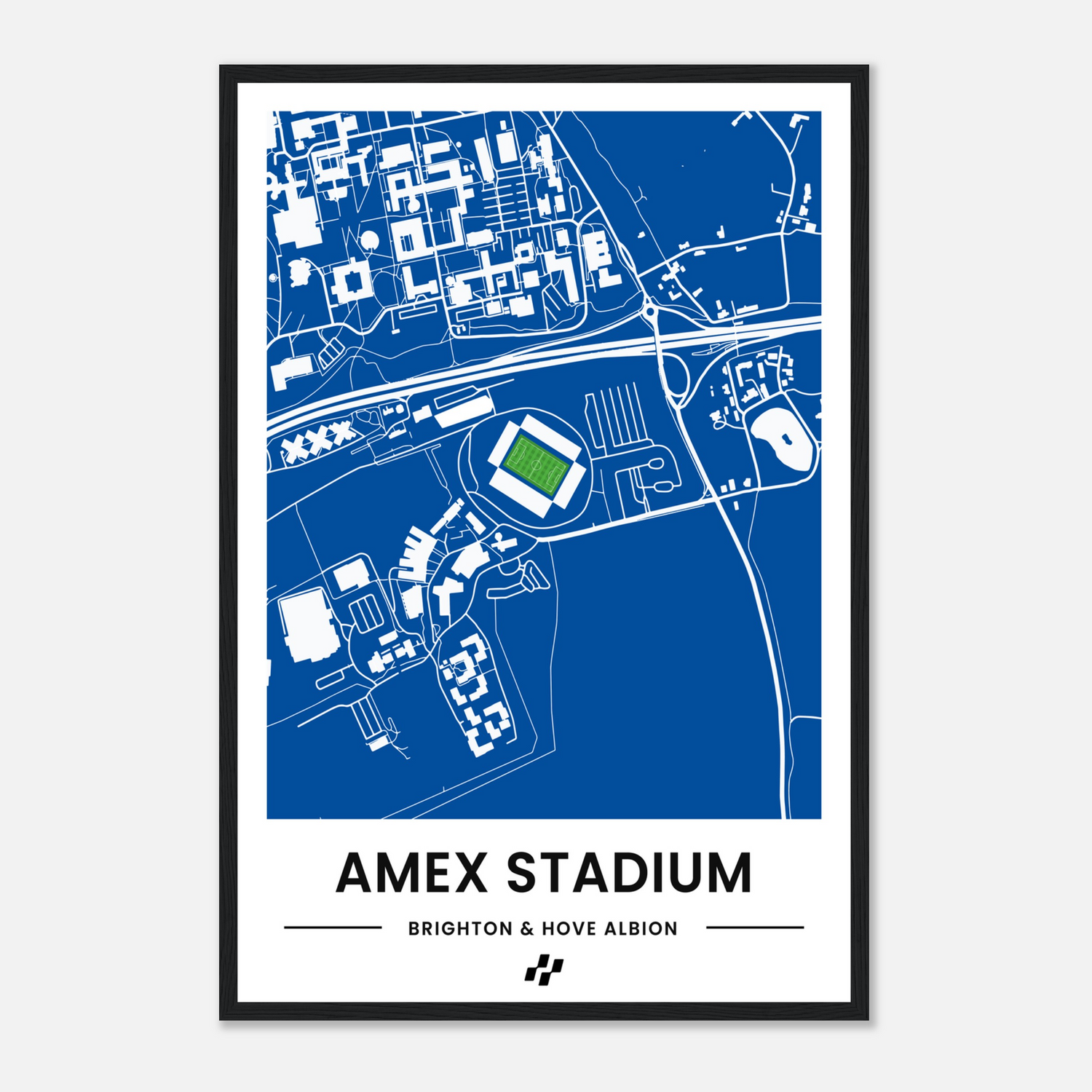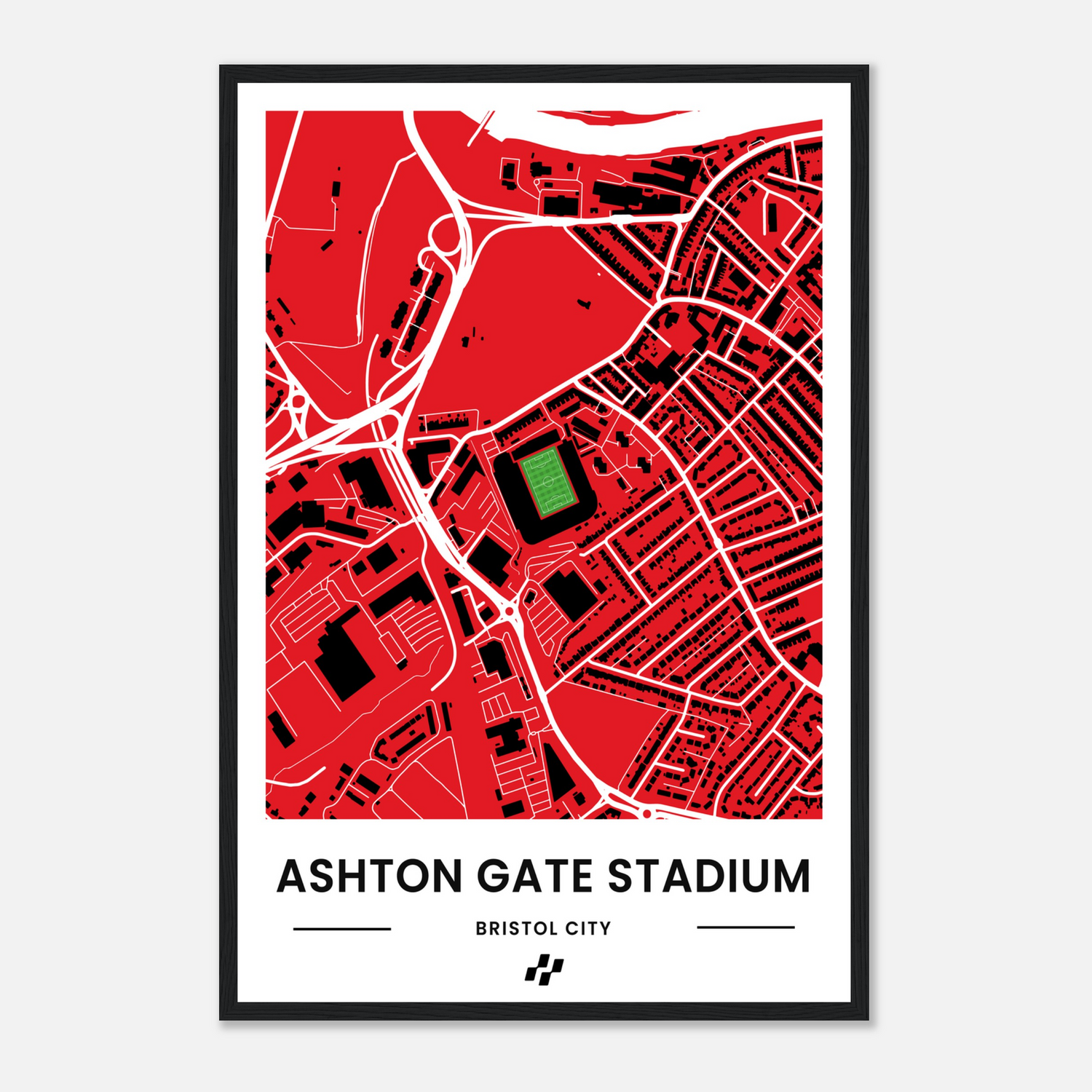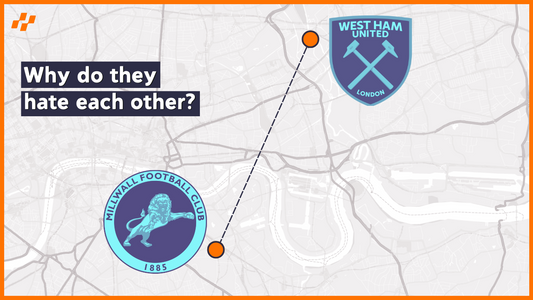
How Fulham and QPR nearly became 'Fulham Park Rangers'
Share
How would you feel if the club you support, merged with a rival? Well a single decision nearly ended Fulham and QPR, forever changing football history. Stemmed by property developers eyeing up prime London real estate. But instead of a West London hybrid club, what followed was fierce resistance, dramatic protests, and a fight to save two historic teams.
West London has always been home to passionate football, rivalries, and deep-rooted history. While Brentford and Chelsea make up half of the region’s clubs, in this article, we tell the story of the other two—Fulham and QPR—and how they came close to merging and being renamed: Fulham Park Rangers.
By Josh Greaves
The Proposed Merger
In early 1987, Fulham Football Club were in the midst of their own financial struggles, playing in the third division of English footbal and it was looking troublesome for the club in their future years.
The ownership of Fulham Stadium, Craven Cottage, was in doubt, leaving the forces of financially centred businessmen to take advantage of the club’s current difficulties. This came largely in the form of Fulham’s chairman, David Bulstrode who was also the leader of property company Marler Estates. Bulstrode, first and foremost, was just this, a businessman, and he planned to use these difficulties in an attempt to build on his property company, and in the long run his wealth.
Already owning Craven Cottage and Chelsea's Stamford Bridge, On the 24th February 1987, Bulstrode announced at a joint press conference the purchase of QPR and the club’s ground, Loftus Road, with plans to merge Fulham with his new acquisition.
At this point in time, QPR were in the top flight, had been FA Cup runners-up, in the 81/82 season, and the following season gaining promotion by winning the second division. By 1987, they were a well-established first division team and a force in English football, making them the perfect team for Bulstrode’s planned merger, with Fulham Park Rangers being a likely name for the club.
In the Fulham chairman’s eyes, the merger may have benefited both the football side of his life and his business.
The plan was to play matches at QPR's stadium while selling off Craven Cottage for housing due to its prime location by the River Thames being ideal for luxury housing. QPR manager Jim Smith would be put in charge of on-the-field affairs, effectively dissolving Fulham as a footballing entity. However, the plans for the merger were grossly protested.
Protests
Together Fulham and QPR fans joined forces in an attempt to put a stop to Bulstrode’s plans, and using the powers of the media, the fans went about this immediately.
But in an era before social media to create sharable content and make noise, they had to turn to what was available, via the power of TV, newspapers and radio, supporters of both clubs were able to create a strong force in opposing the merger, with Fulham gaining the support of Television stars of the time.
Such as Dominic Guard, a lifelong Fulham fan, who had appeared in a number of high-profile 1970s films including Picnic at Hanging Rock, The Count of Monte Cristo and had the name to help garner publicity. QPR also managed to conjure up a strong force within print media, making their opinion on the issue very clear to the public.
After continued efforts, such as synchronised protests from both sets of supporters, former Fulham player and Match of the day presenter, Jimmy Hill, decided to get involved and front the battle against the merger of Fulham and QPR.
A ‘No Merger’ campaign was put together by QPR supporters to demonstrate on the pitch and stop the home game against Manchester City from kicking-off. over 300 fans raced onto the pitch as the referee led the teams out.
With the Football Association now spooked by media coverage of the protests, their initial interest to the merger due to their growing anxiety about the game’s finances, suddenly diluted and a few days later, the merger was no more.
Jimmy Hill continued to lead the supporters in their public outcry, and with the help of a backed consortium, he was able to buy Fulham Football Club, restoring some pride back into the team’s following. Despite this, the club’s ground, Craven Cottage, was still owned by Bulstrode’s Marler Estates.
Bulstrode passed away in 1989 after a stroke, with Richard Thompson becoming chairman of QPR. A Recession saw Marler Estates collapse and was then purchased by another company called Cabra Estates, who later also went under in an unlikely positive turn of events for Fulham fans.
This left the Cottage under the ownership of the Royal Bank of Scotland and Fulham were able to conclude a deal.
Aftermath
Fulham held the lease to their ground until the 31st May 1993, and after this time, with the help of their ‘Fulham 2000’ scheme and Egyptian businessman, Mohamed Al-Fayed, were able to buy back the stadium for 7.5 million pounds. With the owners, His long-term aim was that Fulham would become a Premier League side within five years. Which had been achieved a year ahead of schedule.
Ironically, Fulham did temporarily leave Craven Cottage while it was being upgraded to meet modern safety standards. We won’t go into this in too much detail in this video, but there were the same fears that the club would not return to the Cottage after it was revealed that Al-Fayed had sold the first right to build on the ground to a property development firm.
It was also the first season in over 115 years where Fulham did not play at Craven Cottage. Al-Fayed had envisioned a completely new stadium, though plans collapsed on a combination of objections by local residents and escalating costs which made a new stadium no longer viable.
To this day the West London clubs are both household names in English football. As it stands (2025), Fulham F.C. currently hold the upper hand, being a thriving team in the Premier League, however, Queens Park Rangers are still holding their own in the Championship. Since the days of Bulstrode’s proposed merger, Fulham have recently been Championship play-off winners twice, in the 2017/18 and 2019/20 seasons, and even were the Championship champions in 2021/22.
The club’s record Premier League win, in fact, was against their old rivals, beating QPR 6-0 on the 2nd November 2011. While QPR haven’t seen the same silver wear in recent years, they are still a much-loved club that are a well-established Championship team, even having stints in the Premier League.
Overall, it is clear that in the case of the merger, the non-stop support for both Fulham and QPR was unparalleled, and really showcases the pride within, not only West London, but English football as a whole.





